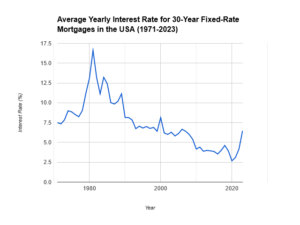We always strive to use facts and academics when we set up portfolios and, when we as a financial advisor practice, complete advanced financial plans we want our clients to be as knowledgeable as
possible.
This short article explores the limitations of the Fed’s control over interest rates,
particularly long-term rates, as explored by economist Eugene Fama. The relationship between
the Federal Reserve, interest rates, and the market is intricate and constantly evolving.
Fama’s Challenge: Limited Control, Market Influence
Fama argues that the Fed’s ability to dictate interest rates, especially long-term ones, is weaker
than commonly believed. He highlights how market expectations often anticipate the Fed’s
actions, suggesting the market itself plays a significant role in setting these rates. Additionally,
tools like quantitative easing (QE), where the Fed pays interest on reserves to control short-term
rates, further illustrate how the Fed might be responding to market pressures, particularly when
rates are rising. This raises questions about the Fed’s true influence on inflation control and how
effectively short-term rates translate to consumer and business decisions.
Beyond Absolute Control: The Fed’s Role
While the Fed doesn’t have absolute control, its monetary policy actions do impact interest
rates. However, this influence is temporary and intertwined with various factors. Market
expectations, the overall economic climate, and the type of interest rate (nominal vs. real) all
play a part. Determining the true strength of this influence can be challenging due to the
complexities of analyzing historical data and real-world scenarios.
The Market’s Voice: The Bond Market Connection
The bond market offers a clear example of how market forces impact interest rates. Interest
rates and bond prices have an inverse relationship. When interest rates rise, existing bonds with
lower fixed rates become less attractive, causing their prices to fall. Essentially, investors seek
the higher returns offered by newer bonds with more competitive rates.

Historical Fluctuations: The Case of Mortgage Rates
Mortgage rates in the USA serve as a historical illustration of this dynamic interplay. Rates have
fluctuated significantly, reaching lows of around 3% in 2021 and highs of nearly 18.6% in 1981.
While there’s a general downward trend, periods of economic instability can cause spikes,
demonstrating how broader market forces can influence mortgage rates, a crucial factor in the
housing market.

Conclusion: A Shared Stage
In conclusion, the Fed plays a role in influencing interest rates, but its control is not absolute.
Market expectations and forces significantly impact both short-term and long-term rates.
Understanding this complex dance between the Fed and the market is essential for navigating
the ever-changing world of interest rates.
If you have a portfolio that you want analyzed please feel free to reach out to our financial advisor team
Sources: Does the Fed Control Interest Rates? The Review of Asset Pricing Studies, Forthcoming Chicago Booth Research Paper No. 12-23 Fama-Miller Working Paper Freddiemac.com

